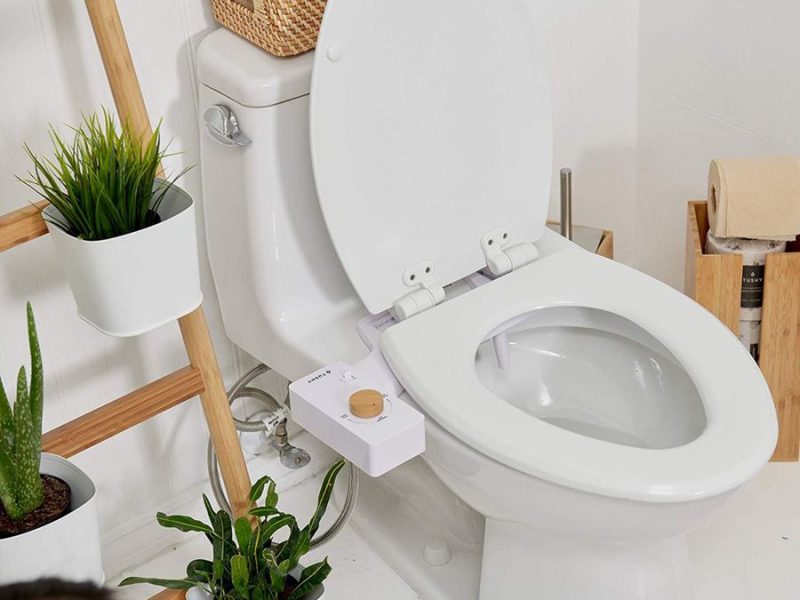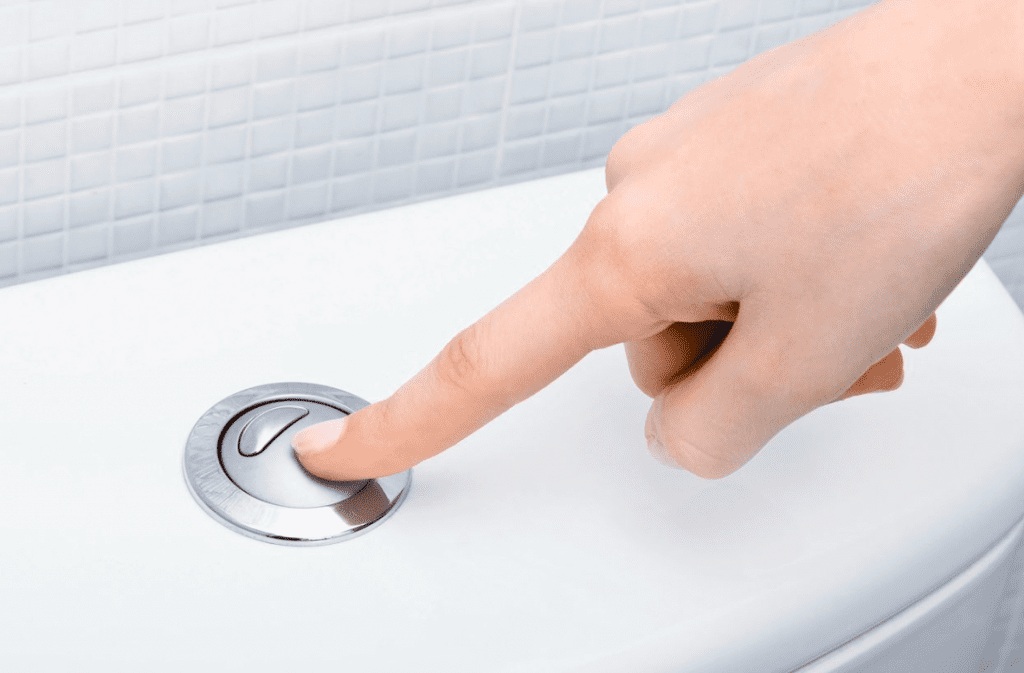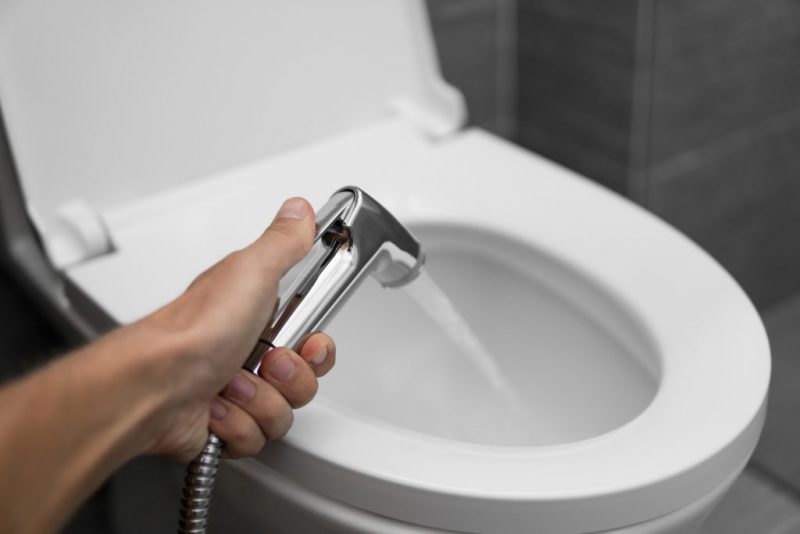However, if you are still using an old toilet, you might be faced with consuming a lot of water. It’s advisable to get a bidet toilet or a modern toilet with a bidet attachment or seat. It will help reduce the quantity of water the bidet consumes.
So do bidets waste water? No, they don’t! Kindly put your mind at rest as a bidet consumes only ⅛ gallons of water and saves millions annually. Now scroll down and learn why buying a bidet toilet is a good investment.

Do Bidets Waste Water?
To simply answer your question, bidets do not waste water. You might wonder why they do not waste water despite using water to clean the user. Here are some of the reasons;
Bidets apply small water to clean your private parts thoroughly
Bidets are designed to have nozzles that look like little pipes with tiny holes. Bidets do not use much water because the tiny holes in their nozzles allow a small stream of water to come out. And yet, they wash effectively.
Bidets use the same amount of water you use in washing your hands
A hygienic person would always wash their hands after using the toilet. However, the bidet uses the same amount of water someone who washes hands uses. It shows how little the quantity of water used by a bidet is.
Typically, a bidet uses as little as 0.05 to 0.1 gallons of water per cleaning session. It is so tiny compared to the water consumed when you decide to wash and apply water yourself.
Users control it
Sometimes, the quantity of water the bidet uses depends on the user. It is because the user controls the stream of water that comes out of the bidet. Therefore, such a user can regulate the amount of water used by not using more than the needed amount for cleaning.
Bidets reduce the use of water in producing toilet paper
According to research and statistics, more than 36 gallons of water are used to make a single roll of tissue paper. It is quite a lot and wastes water a lot. However, bidets do not use up to that amount to clean and flush. Therefore, switching to using bidets will drastically reduce toilet paper production.
A bidet uses little water per use and during flushing
A bidet generally uses about a one-eighth gallon of water during use. However, it can use up to three to four gallons of water for efficient flushing under normal conditions of the bidet toilet.
The invention of modern high-tech bidets saves more water
The world is discovering, and modern high-tech bidets have been invented. These bidets have customized low spray volumes, which help them reduce the quantity of water used in cleaning. They reduce the water used and still maintain the sufficient water pressure needed to get an effective clean. Electric bidets lessen the use of water in their cleaning.

How Much Water Does a Bidet Use per Flush
Many people move further to ask what percentage of water the bidet uses per flush. Bidets do not flush the toilet unless you use a bidet combo or integrated bidet. This is where this question falls.
The bidet combo is made, so you need less water to flush your toilet. Furthermore, according to the agency in charge of environmental protection, using a regular older toilet would consume more water per flush than a recent and standard one.
Therefore, you should change your old toilet to a low flush toilet with a bidet toilet seat or attachment. You can also go for a bidet toilet if you can financially get one, as it will help minimize the quantity of water consumed by your toilet.
Nevertheless, a regular bidet uses about ⅛th gallons of water with its toilet using three to four gallons per flush.
Do Bidets Shoot Clean Water?
To be conscious of personal hygiene, you might ask, do bidets shoot clean water? Absolutely yes! Some do not know where the bidet taps its water from and, as such, base their conclusions that it doesn’t shoot clean water. However, here are some things you should know about a bidet shooting clean water.
Bidet water does not come from the toilet
Some believe the bidet gets its water from the toilet bowl, which is a wrong assumption or conclusion. A bidet is never connected in a way that the toilet supplies its water. By the way, how much water would a toilet bowl be able to provide a bidet that would be enough for it? It’s impossible because a toilet bowl only contains little water.
Bidet water comes directly from the source of the water that enters your home or bathroom and not from the toilet tank.
Must read: Bidet Hygiene

Bidet water is the same water you have your bath with
As you know, bidet water comes directly from the water that enters your bathroom; the water that supplies your bathtub and toilet sink also comes from that source. So, it tells you that your bidet water is the same water with which you have your bath and probably brush your teeth.
If the water source is polluted, so will your bidet water
Since you now know that your bidet water comes from the primary source of water that enters your home, which could be your water tank. However, if your water tank is polluted with bacteria or dirt, your bidet will give unclean water. It can endanger the health of every user who uses the bidet for cleaning.
Some electric bidets have filtering features
One of the advantages of an electric bidet is that some have filters that help filter the water entering the bidet. So, when the water source is polluted, the bidet filters the dirt and germs away and receives fresh and clean water into its system.
Now you can see that bidets shoot clean water except in cases whereby their sources are polluted. So, do not be worried whether your bidet shoots clean water. Nonetheless, we would advise you to always check the source and purify it to be sure of the water that enters your bidet or try to get an electric bidet with a filter.
Read more: Is Bidet Water Cold?
In Summary
Are you wondering whether to install a bidet in your home, hotel, workplace, or public toilet? Don’t be. A bidet, don’t waste water. However, an old toilet will consume more water per flush than an electric toilet. Kindly consider getting a bidet toilet or something better than the former toilet.
